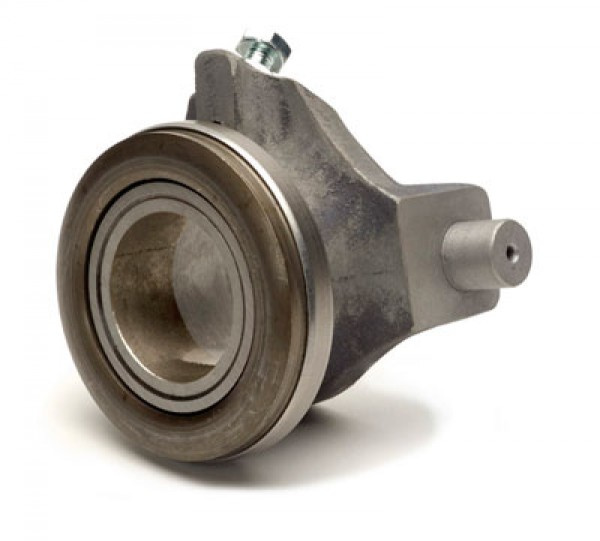Come on ,don’t be shy with your comments.
Jim
“shy?”
You been here long, Jim?
LOL!!
Looks like a good freshening will work well for ya!
Red wash paint on ANF and ANC threaded bolts is very commonly found on XK120 and Mark V chassis, even inside my XK120 sump, early Mark VII too I believe. Hadn’t heard much of finding in on 140s, but anything is possible.
Every bolt on the engine except the carb and water pump banjos should be ANF or ANC threads with SAE sized hex heads. I don’t know if ANF or UNF nuts and SAE tools can still be found in the UK; if not, they are common and at all price and quality levels from US vendors. Let us know and we can steer you to some.
Keep a record of where the head has red paint and where it doesn’t. All part of the ongoing research into these things.
You aren’t the first to find a flywheel put on 180 degrees out by a DPO. The letter B is a balance mark from when it was matched with the original pressure plate.
The clutch looks ok to me. The pressure plate is a newer type.
The oil pipe should have copper washers on both sides of each banjo. The brass is not soft enough to get by without them.
The breather plate holes, up and down is correct, so the oil doesn’t build up in there, drains back into the sump.
The balance weights on the fan were set when new, and there are tiny drilled location holes in them and matching holes in the fan.
Correct on the head D washers, on all but the front two.
When you lift the head off you should shout Harrurr-harr and it will come off easier. 
I hope the intake manifold comes off as easy as the exhausts. Mine didn’t, it put up a terrific month long fight.
Head looks pretty good inside, not too much carbon or corrosion. Whoever had it used rust inhibiting anti-freeze; hope you will too.
Don’t skim it unless it is way out of flat.
All part of the fun of this hobby, eh what?
Jim,
You have a diaphragm spring clutch. The original would have been coil springs. A very long time ago I’m sure we had a long discussion about converting the coil type to diaphragm because it gives a less heavy pedal. But I seem to remember that the available diaphragm covers were from E Types and that the mounting hole centres were different so the flywheel had to be re-drilled and tapped. I didn’t see any evidence of that on your flywheel so maybe it, too, has been replaced.
Eric
From what i have seen i think a 10" clutch is availabe , but probably from the E type . This is a heavy duty and heavy pedal . There is a 9 1/2" which is better suited and has to have the flywheel drilled .
So do I have an E type clutch ?
Jim
Hi Jim, looking good - is that the original engine to the car?
Agreed. But I think I recall that there is a nut securing the upper timing chain idler sprocket that has a Whitworth head? Going from memory on this.
Yes the numbers match.
That’s good news.
If the clutch/flywheel has been changed to take a diaphragm pressure plate that’s a definite winner. My Mustang, Cobra, Mini and Land Rover all came new with three-finger pressure plates - they all have diaphragm covers now.
The arrow with fletching timing mark to the left of TDC, to be viewed through the hole in the bell housing, is characteristic of the 120/140 flywheel, and there should be 132 teeth, chamfered on the rear edge.
We’ve discussed these before and IIRC the weight is about 19 pounds (8.6 kg).
Thanks Rob
I have 132 teeth as you say . So is my friction plate and cover none XK140 ?
Jim
The friction plate looks the same.
Your pressure plate is the later diaphragm type.
Here is a pressure plate and friction disc out of a 140.
There is normally a ring attached to those 3 fingers with spring clips, but it fell off and is in another box somewhere in my garage. The graphite bearing in the bell housing presses against the ring to release the clutch.
Diaphragm pressure plates use a different type of release bearing so better be sure you have the right type in your bell housing.
That is the original type graphite bearing.
I could be wrong but I thought the later cars use a ball bearing design.
Did you notice the water still in the intake side of the block? This is not a surprise to me since a broken lower radiator hose will NOT drain that side of the block. And from memory, there are at least 2 different types of carbon-faced bearings, the heights between the two being the operative difference.
to my knowledge none of the xk engine cars used a ball bearing release bearing.
I would agree. I’ve never seen anything other than the carbon ring release bearing. If you have the diaphragm style clutch cover the correct release bearing is longer (or taller) than the unit for the Borg & Beck style.
Agree on the Carbon thrust bearing, my S11 manual in my ‘66 ‘S’ is CB.
I did replace the bottom hose and run the engine with fresh water so it could be new or old water ?
https://www.bighealey.co.uk/catalogues/jaguar/jaguar-clutch
I knew I’d seen it somewhere, but I guess it was aftermarket, for the racers in us. 




